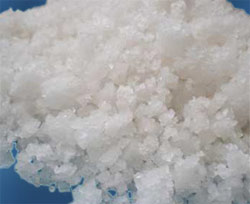I have to say that my frustration with the water softening market really did reach boiling point when I initially started to research this subject. It’s all very well coming across information that manufacturers state about capacity and water softeners, but I found that a lot of it can be very misleading. So, in the following few words I aim to try and get straight to the point and to some extent not confuse you.
However, to explain this properly I couldn’t do it without using some industry jargon. As you will know from browsing my website, this is something I attempt to avoid at all costs but, well, there was no way around it this time.
In short the capacity of a water softener is the amount of hardness it will remove from your water before it needs more salt (or as the experts put it, regenerating). Sounds simple doesn’t it? What if I were to tell you a water softener that’s advertised with a 32,000 grain capacity isn’t actually that at all.
An Explanation of Why
What you have to remember is your softener will remove hard water with the help of about 1 cubic foot of resin, and the resin needs to be regenerated regularly (to restore it for its purpose).
Stay with me for this one because it’s not the easiest thing in the world to explain. So, a 32,000 grain capacity water softener should be able to remove 32,000 grains of “hardness” before you need to regenerate it again, but this isn’t strictly true. If tested under lab conditions the softener will indeed remove this amount and that’s because things like water pressure, flow and temperature are monitored closely.

These so called ideal conditions hardly ever happen anywhere but in a laboratory and this is where the trouble starts. Every household is different, and if you use a water softener when you’re on a trip the water conditions are even more precarious. What this means is a 32,000 grain capacity water softener will probably only deal with about 28,000 – 30,000 grains before regeneration is required.
Speaking of regeneration, when you have to do a backwash on a water softener of this size, you will need at least 30-36lbs of salt per cubic foot of resin! Shocking isn’t it? Many manufacturers forget to mention this little statistic.
It is possible to regenerate a water softener using a mere 5-7lbs of salt. When this is done, it will yield a 20,000 grain capacity. In short 1/3 of the amount of salt used will yield 2/3 of the amount of maximum capacity. This makes it easier on your pocket, helps the environment and creates less stress on your arm muscles.
How Water Softener Capacity Should Be Explained

In some States throughout the USA and Canada, it’s a legal requirement to state the capacity of a water softener by using how much salt it will need per regeneration AND the cubic feet of resin. This means when you read up on a product you’re interested in, it will state the grains used per pound of salt.
This is a much better and far more honest way of telling consumers what they can expect from their water softener in terms of efficiency.
Overall
Great numbers of consumers complain bitterly about their salt based water softeners, and it’s because of the way in which manufacturers tell you what their softeners are capable of, so hopefully adding this page to my website has helped.
As you can see from the information above, I felt I had little choice but to add this page to my website.
